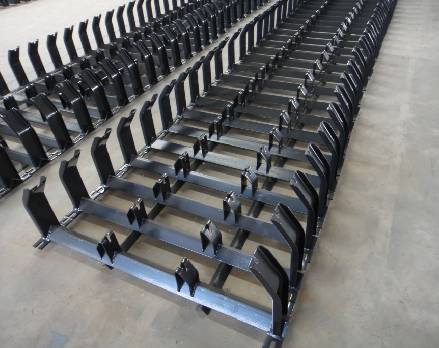 Afrikaans
Afrikaans  Albanian
Albanian  Amharic
Amharic  Arabic
Arabic  Armenian
Armenian  Azerbaijani
Azerbaijani  Basque
Basque  Belarusian
Belarusian  Bengali
Bengali  Bosnian
Bosnian  Bulgarian
Bulgarian  Catalan
Catalan  Cebuano
Cebuano  Corsican
Corsican  Croatian
Croatian  Czech
Czech  Danish
Danish  Dutch
Dutch  English
English  Esperanto
Esperanto  Estonian
Estonian  Finnish
Finnish  French
French  Frisian
Frisian  Galician
Galician  Georgian
Georgian  German
German  Greek
Greek  Gujarati
Gujarati  Haitian Creole
Haitian Creole  hausa
hausa  hawaiian
hawaiian  Hebrew
Hebrew  Hindi
Hindi  Miao
Miao  Hungarian
Hungarian  Icelandic
Icelandic  igbo
igbo  Indonesian
Indonesian  irish
irish  Italian
Italian  Japanese
Japanese  Javanese
Javanese  Kannada
Kannada  kazakh
kazakh  Khmer
Khmer  Rwandese
Rwandese  Korean
Korean  Kurdish
Kurdish  Kyrgyz
Kyrgyz  Lao
Lao  Latin
Latin  Latvian
Latvian  Lithuanian
Lithuanian  Luxembourgish
Luxembourgish  Macedonian
Macedonian  Malgashi
Malgashi  Malay
Malay  Malayalam
Malayalam  Maltese
Maltese  Maori
Maori  Marathi
Marathi  Mongolian
Mongolian  Myanmar
Myanmar  Nepali
Nepali  Norwegian
Norwegian  Norwegian
Norwegian  Occitan
Occitan  Pashto
Pashto  Persian
Persian  Polish
Polish  Portuguese
Portuguese  Punjabi
Punjabi  Romanian
Romanian  Russian
Russian  Samoan
Samoan  Scottish Gaelic
Scottish Gaelic  Serbian
Serbian  Sesotho
Sesotho  Shona
Shona  Sindhi
Sindhi  Sinhala
Sinhala  Slovak
Slovak  Slovenian
Slovenian  Somali
Somali  Spanish
Spanish  Sundanese
Sundanese  Swahili
Swahili  Swedish
Swedish  Tagalog
Tagalog  Tajik
Tajik  Tamil
Tamil  Tatar
Tatar  Telugu
Telugu  Thai
Thai  Turkish
Turkish  Turkmen
Turkmen  Ukrainian
Ukrainian  Urdu
Urdu  Uighur
Uighur  Uzbek
Uzbek  Vietnamese
Vietnamese  Welsh
Welsh  Bantu
Bantu  Yiddish
Yiddish  Yoruba
Yoruba  Zulu
Zulu wing pulley lagging
Understanding Wing Pulley Lagging
Wing pulleys are an essential component in many conveyor systems, designed to improve the efficiency and reduce wear on belts. One common issue that arises in their operation involves lagging, a process that involves adding a layer of material to the pulley surface. This article explores the importance of lagging for wing pulleys, its benefits, and the materials typically used in the process.
What is Wing Pulley Lagging?
Lagging refers to the application of a wear-resistant material on the surface of a pulley. For wing pulleys, which feature a distinctive design that minimizes material buildup, lagging is particularly crucial. It helps to enhance friction between the pulley and the conveyor belt, ensuring a smooth transfer of material while simultaneously extending the lifespan of the pulley itself.
Benefits of Wing Pulley Lagging
1. Increased Traction One of the primary advantages of lagging is the enhanced traction it provides. By increasing the surface area's grip, lagging minimizes slippage between the conveyor belt and the pulley, improving the system's overall efficiency.
2. Wear Resistance Pulleys face significant wear due to the constant friction and the materials they move. Lagging protects the pulley from abrasion caused by the belt and the conveyed materials, thereby prolonging its operational life and reducing maintenance costs.
3. Lower Noise Levels A well-lagged wing pulley can significantly reduce the noise generated by the conveyor system. This is especially valuable in environments where noise pollution is a concern, contributing to a quieter workplace.
wing pulley lagging

4. Improved Material Handling Lagging helps in managing various materials that might present challenges, such as wet or sticky substances. The enhanced grip helps to prevent material spillage, thereby improving the handling efficiency of the conveyor system.
Common Lagging Materials
Several materials are commonly used for lagging wing pulleys, each with its unique properties
- Rubber This is the most widely used lagging material due to its excellent grip and wear resistance. Rubber lagging can accommodate different environmental conditions, making it versatile for various applications.
- Ceramic For applications involving highly abrasive materials, ceramic tiles can be used. They offer exceptional wear resistance but can be more costly than rubber.
- Polyurethane This material is known for its durability and flexibility. It can withstand a wide range of temperatures and provides good slip resistance.
Conclusion
In summary, wing pulley lagging is a critical aspect of maintaining efficient conveyor systems. By enhancing traction, reducing wear, minimizing noise, and improving material handling, lagging significantly contributes to the longevity and efficiency of wing pulleys. When selecting lagging materials, it is essential to consider the specific operational requirements to ensure optimal performance and reliability. Investing in proper lagging solutions can lead to long-term benefits and cost savings in the management of conveyor systems.
-
Revolutionizing Conveyor Reliability with Advanced Rubber Lagging PulleysNewsJul.22,2025
-
Powering Precision and Durability with Expert Manufacturers of Conveyor ComponentsNewsJul.22,2025
-
Optimizing Conveyor Systems with Advanced Conveyor AccessoriesNewsJul.22,2025
-
Maximize Conveyor Efficiency with Quality Conveyor Idler PulleysNewsJul.22,2025
-
Future-Proof Your Conveyor System with High-Performance Polyurethane RollerNewsJul.22,2025
-
Driving Efficiency Forward with Quality Idlers and RollersNewsJul.22,2025





























